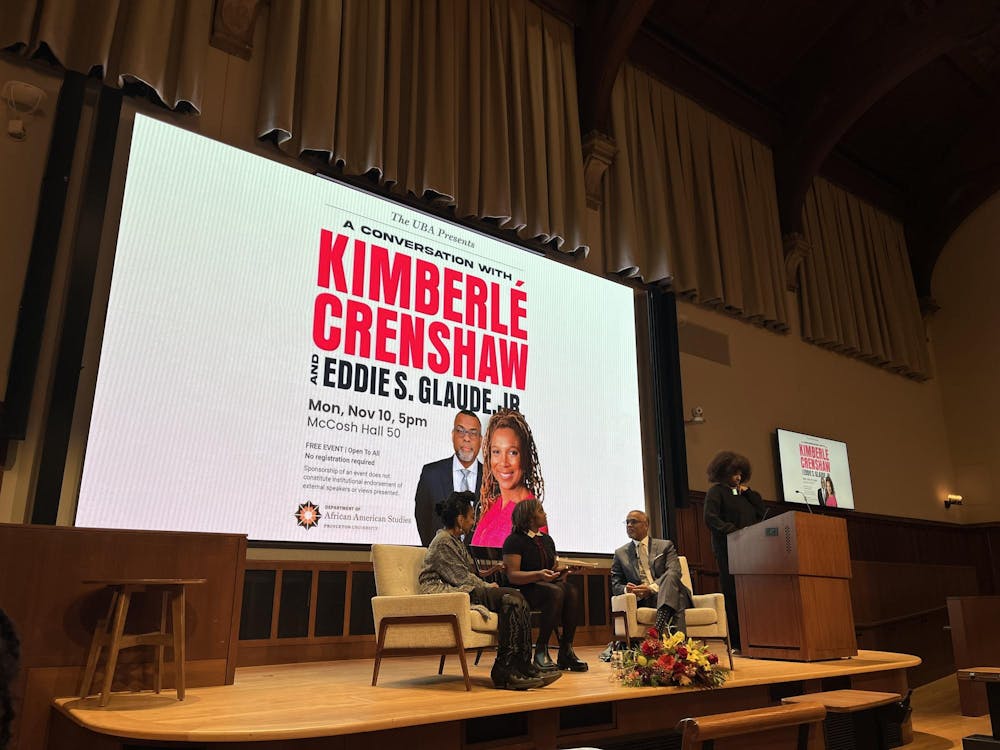In the days when Princeton was known as a "southern school," an escaped slave — named Jimmy Johnson — befriended students of the University. One day his identity was discovered by authorities, but students bought his freedom and later his headstone, which still stands in the traditionally African American section of the Princeton Cemetery.
"There are a lot of incidents like that," said Jim Floyd, the first black mayor of Princeton, at a meeting Saturday between the USG Committee of Campus and Community Affairs and members of the John-Witherspoon community.
But Floyd and the other residents who attended the meeting agreed that the University has never put forth a consistent effort to welcome the African American members of the town's community, who have lived in the traditionally close-knit, minority neighborhood north of Nassau Street for over two centuries.
"I think all of us know that Princeton sells its idyllic environment," said Yina Moore '79, who lives on Green Street and acts as the head of the neighborhood task force for Princeton Future, a citizens' group interested in the long-term development of the community.
"It's not an urban campus . . . where there are outside influences that are part of the experience. And having said that, it's made a decision about how it wants to sit with the rest of the community," Moore said.
The student committee met with long-time residents of the John-Witherspoon area to learn more about the concerns of a community that many University students and employees know little about.
Inside the Witherspoon Presbyterian Church — at the corner of Witherspoon and Quarry Streets — which was founded as an all-black house of worship 150 years ago, Floyd and four other residents outlined the history of the black community in Princeton, described its most current conflicts and concerns and discussed past and present relations with the University.
"If you stand at the foot of Witherspoon, you cannot see Nassau Hall," said Floyd. But he added that while the University can not be seen, its influence can be felt — specifically its effects on property and land use.
Floyd spoke of the African Americans whose homes were moved and torn down to make room for Palmer Square, which had been sold to Edgar Palmer by the University. He also pointed to the campus' continuous expansion, which inevitably impacts the John-Witherspoon neighborhood — an area already plagued by high rents and overcrowding.
"There is a nebulous, forever changing graduate [student] population," said Floyd, "which leads to transient housing in our neighborhood."
John-Witherspoon residents' perception of the University has also been shaped by the racial makeup of the academic institution.
"The University was dragged kicking and screaming with affirmative action," said Floyd, who added that he had the good fortune of working with University president Rubert Goheen during Princeton's period of transition toward a more racially-mixed campus.

He also pointed to what he called the University's current difficulty with at retaining and attracting minority faculty.
"Why would the University let someone like Cornel West go? That's part of the kind of thing that we see," Floyd said.
"Can't get and don't want are one and the same phrases, and the typical rejoinder is, 'What can you do to help?' I'm not in the hiring business, but at the same time, you give me six months and I'll give you the people you want," Floyd added.
Floyd sought to emphasize that feelings about the University were not prompted by bitter condemnation, but rather by a desire for mutual appreciation.
"None of us are bitter or rancorous against anyone," said Floyd. "If you think our cause has some merit, it would do us both some good."
Floyd praised the WROC rallies as the most impressive thing he has "seen among students since the Civil Rights [Movement]" and encouraged the committee to be similarly active.
"My logic is that if there's a 51-percent chance, go for it, and if there's a 50-percent chance raise nine brows of hell and then go for it," Floyd said.
He recommended that the USG committee begin its efforts by becoming knowledgeable about the town government and the University's role in managing town property.
He also said that members of the community would be happy to meet with faculty members to educate them about a neighborhood whose history might be a valuable addition to many curricula.
Members of the Campus and Community Affairs Committee said that after having learned about the neighborhood's concerns they can now take tangible steps towards improving relations with members of the John-Witherspoon neighborhood.
"Instead of just assuming what they think," said Nina Langsam '03, the committee's chairwoman, "now we have a concrete way to go about solving problems."
Anna Evans '03, who also attended the meeting, agreed. "The University is not going to address their concerns unless students tell them it's a priority," she said.
Langsam said the group plans to include information about the various neighborhoods on the USG website and in a community guide that will be handed out at the beginning of the academic year, so that students will realize "it's not just Nassau Street that exists."
The committee also plans to include a walking tour and slide show of the John-Witherspoon neighborhood in Princeton History Week, an event the committee is planning for the days preceding Communiversity.
At the end of the meeting Floyd stood at the head of the table and said, "Please have a feeling that you share our community," echoing the students' parallel desire to make the John-Witherspoon neighborhood a more significant part of University life.







